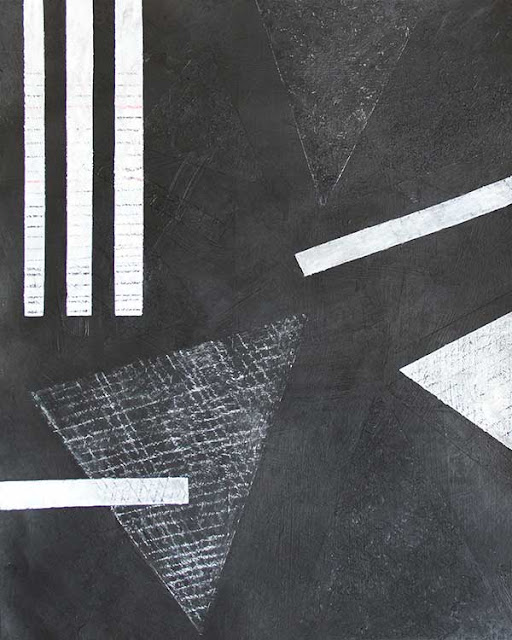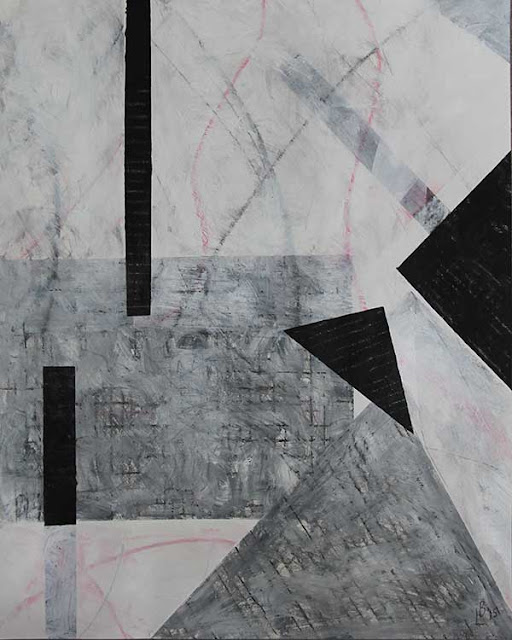A New Spin on Text Art
The initial idea for the "Hash Art" series was to merge an existing genre (Text Art in a 50s-60s pop style) with something very current and contemporary.
Everyone has heard, perhaps too much, about AI and the Blockchain, but are starting to look under the hood out of curiosity, and may need to in another decade or so when it may be a job skill for people working with these technologies.
Having worked in IT for a number of years, I'm familiar with what's beyond the familiar computer interface and comfortable with code and metadata (fields of information behind a digital file, date, file size and so on). One of the other fields is a "fingerprint" for a file, expressed in a 32, 64 or 128-character machine-generated code, called the "MD5 Hash", or "SHA Hash". If two files share the same hash number they are exact duplicates. Making any changes to one of the files would assign it a new hash code, even by changing one punctuation mark.
With Hash Art, I'm using the 32 characters as a basis for artwork. These 32 characters may represent a block of text, such as a poem, or even a larger block of text comprising a short story. The code and text then suggest metaphors and colors. For "Rules" I had used Asimov's Three Laws of Robotics to generate the 32-character sequence and then used silver as a color metaphor. The title is self-referential in that I am following my own rules for assigning colors to characters. This was also done in "Love Loves to Love Love", where cosmetic colors were assigned to number ranges, as a metaphor for beauty. The same process was applied to "Anthropocene", where colors were metaphorized with the colors of minerals: Copper, Gold, Red (iron) and White (chalk, calcium)
In the 1950s, Jasper Johns did hundreds of works using numbers and letters, sometimes as a way to riff on the cognitive aspects of language such as the Stroop effect, where the color of a word does not correspond to the word itself, such as the word "red" painted in blue. Instead of applying a literal approach, using Stroop is a clever spin, and a way to infuse peripheral information into art, similar to writing a song based on the daily news, or a new development in science.
In a nutshell, Hash Art, or any text-based art has the ability to access the context of language, and the possibilities in the assignment of visual properties that may enhance or extend the meaning in clever ways, in the same tradition of artists that have used it for decades: Jasper Johns, Mel Bochner, Robert Indiana, and others.
Everyone has heard, perhaps too much, about AI and the Blockchain, but are starting to look under the hood out of curiosity, and may need to in another decade or so when it may be a job skill for people working with these technologies.
Having worked in IT for a number of years, I'm familiar with what's beyond the familiar computer interface and comfortable with code and metadata (fields of information behind a digital file, date, file size and so on). One of the other fields is a "fingerprint" for a file, expressed in a 32, 64 or 128-character machine-generated code, called the "MD5 Hash", or "SHA Hash". If two files share the same hash number they are exact duplicates. Making any changes to one of the files would assign it a new hash code, even by changing one punctuation mark.
With Hash Art, I'm using the 32 characters as a basis for artwork. These 32 characters may represent a block of text, such as a poem, or even a larger block of text comprising a short story. The code and text then suggest metaphors and colors. For "Rules" I had used Asimov's Three Laws of Robotics to generate the 32-character sequence and then used silver as a color metaphor. The title is self-referential in that I am following my own rules for assigning colors to characters. This was also done in "Love Loves to Love Love", where cosmetic colors were assigned to number ranges, as a metaphor for beauty. The same process was applied to "Anthropocene", where colors were metaphorized with the colors of minerals: Copper, Gold, Red (iron) and White (chalk, calcium)
In the 1950s, Jasper Johns did hundreds of works using numbers and letters, sometimes as a way to riff on the cognitive aspects of language such as the Stroop effect, where the color of a word does not correspond to the word itself, such as the word "red" painted in blue. Instead of applying a literal approach, using Stroop is a clever spin, and a way to infuse peripheral information into art, similar to writing a song based on the daily news, or a new development in science.
In a nutshell, Hash Art, or any text-based art has the ability to access the context of language, and the possibilities in the assignment of visual properties that may enhance or extend the meaning in clever ways, in the same tradition of artists that have used it for decades: Jasper Johns, Mel Bochner, Robert Indiana, and others.




